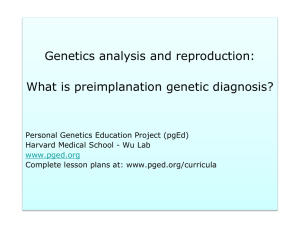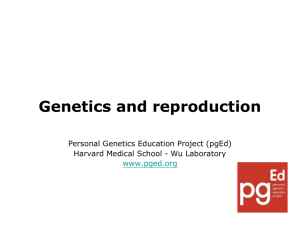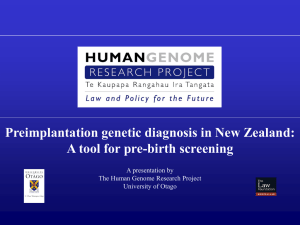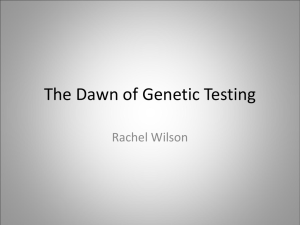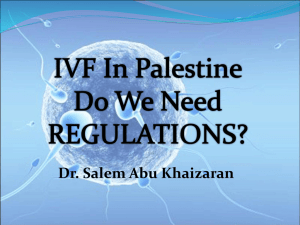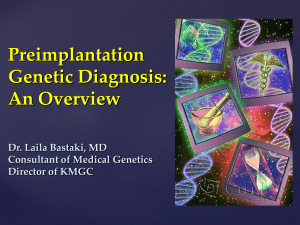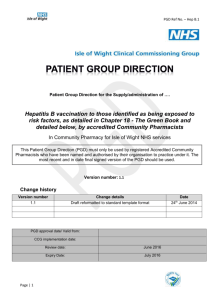Guidelines on Preimplantation Genetic Diagnosis with
advertisement
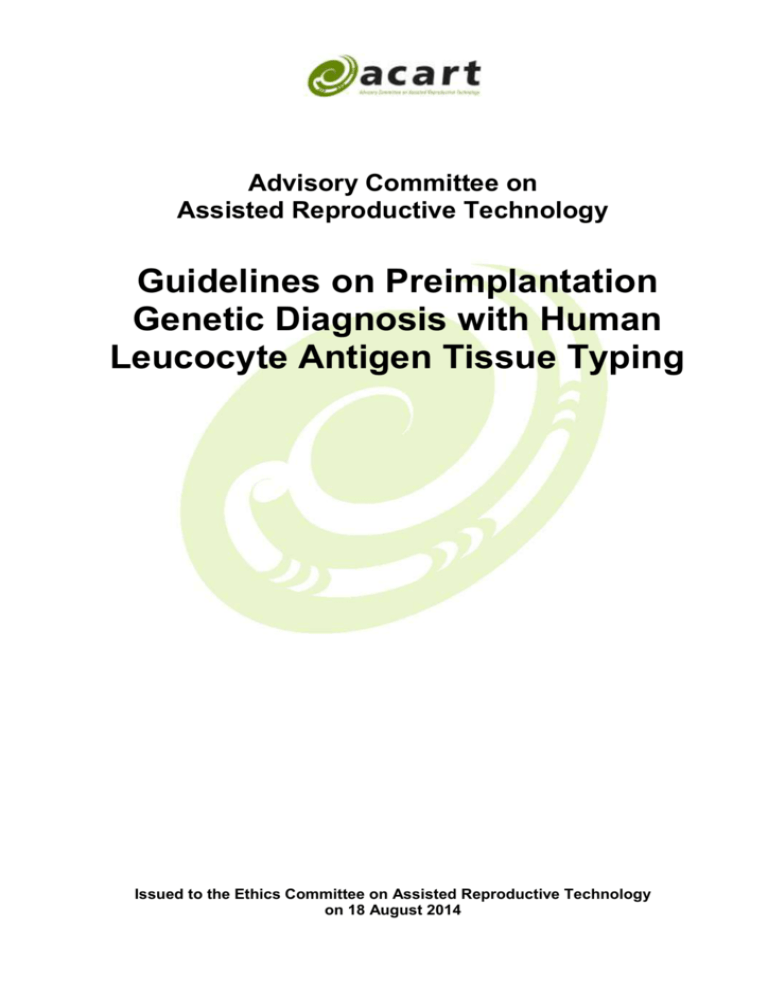
Advisory Committee on Assisted Reproductive Technology Guidelines on Preimplantation Genetic Diagnosis with Human Leucocyte Antigen Tissue Typing Issued to the Ethics Committee on Assisted Reproductive Technology on 18 August 2014 Guidelines on Preimplantation Genetic Diagnosis with Human Leucocyte Antigen Tissue Typing Guidance on terms used In these guidelines, unless the context indicates otherwise, words should be interpreted in accordance with definitions given in the Human Assisted Reproductive Technology Act 2004 and the Human Assisted Reproductive Technology Order 2005. Preamble These guidelines expand New Zealand’s policy on preimplantation genetic diagnosis (PGD) with human leucocyte antigen (HLA) tissue typing to allow its use to find a tissue match for a sick child with a non-genetic disease. PGD with HLA tissue typing may only be used where the child to be treated will be a brother or sister of the resulting child. The Human Assisted Reproductive Technology Order 2005 (the Order in Council) describes PGD as a procedure for genetically testing embryos for specific genetic conditions or chromosomal abnormalities prior to embryo transfer, including any of the following undertaken for, or in connection with, that procedure: (a) biopsy of embryos to remove one or more cells (b) transportation of the cells to an approved laboratory (c) analysis of the genetic or chromosomal constitution of cells obtained by biopsy (d) selection of embryos for transfer on the basis of the results from analysis. Many uses of PGD are provided for in the established procedure, set out in the Order in Council, and, therefore, able to proceed under the management of providers of fertility services. Providers of fertility services must practise in accordance with the Fertility Services Standard. The Order in Council provides that the use of PGD for purposes of the prevention and treatment of a genetic disorder or disease is an established procedure where it involves: (a) diagnosis of familial single-gene disorders where: (i) the disorder has been identified in the family or whānau, and (ii) there is a 25 percent or greater risk of an affected pregnancy, and (iii) there is evidence that the future individual may be seriously impaired as a result of the disorder; or 2 (b) sex determination where: (i) a familial sex-linked disorder has been identified in the family or whānau, and (ii) there is a 25 percent or greater risk of an affected pregnancy, and (iii) no specific test for the particular mutation that causes the disorder is available, and (iv) there is evidence that the future individual may be seriously impaired as a result of the disorder; or (c) (d) diagnosis of familial chromosomal disorders where: (i) the disorder has been identified in the family or whānau, and (ii) there is a 25 percent or greater risk of an affected pregnancy, and (iii) there is evidence that the future individual may be seriously impaired as a result of the disorder; or diagnosis of non-familial chromosomal disorders (aneuploidy testing) where: (i) the woman is of advanced reproductive age, or (ii) the woman has had recurrent implantation failure or recurrent miscarriage. Any other proposal for the use of PGD is not an established procedure and must be submitted to ECART for approval. Other than what is provided for in the established procedure as set out above, sex selection of embryos is an offence under the HART Act. Guidelines 1. When considering an application for PGD with HLA tissue typing, ECART must be guided by the principles of the Human Assisted Reproductive Technology Act 2004: All persons exercising powers or performing functions under this Act must be guided by each of the following principles that is relevant to the particular power or function: (a) the health and wellbeing of children born as a result of the performance of an assisted reproductive procedure or an established procedure should be an important consideration in all decisions about that procedure (b) the human health, safety, and dignity of present and future generations should be preserved and promoted 3 2. (c) while all persons are affected by assisted reproductive procedures and established procedures, women, more than men, are directly and significantly affected by their application, and the health and wellbeing of women must be protected in the use of these procedures (d) no assisted reproductive procedure should be performed on an individual and no human reproductive research should be conducted on an individual unless the individual has made an informed choice and given informed consent (e) donor offspring should be made aware of their genetic origins and be able to access information about those origins (f) the needs, values, and beliefs of Māori should be considered and treated with respect (g) the different ethical, spiritual, and cultural perspectives in society should be considered and treated with respect. When considering an application for PGD with HLA tissue typing, ECART must be satisfied that: (a) the resulting child will be a brother or sister of the sick child; (b) the prospective parents have received, from a genetic counsellor or a clinician, an explanation of PGD with HLA tissue typing; (c) the prospective parents have received medical advice which includes: (i) the treatment options available to the sick child (ii) why PGD with HLA tissue typing is considered part of the best treatment option available (iii) what procedure/s the resulting child will need to undergo as part of the proposed treatment of the sick child (iv) what the outcome of the proposed treatment is likely to be for the sick child (v) (d) what tissue may potentially be required, the only two options being cord blood or bone marrow; the application includes an adequate account of the medical advice; 4 (e) the condition of the sick child for which PGD with HLA tissue typing is being undertaken is judged by the clinical team and prospective parents to be of sufficient severity to justify undertaking the procedure, taking into account: (i) the degree of suffering associated with the condition of the sick child (ii) the speed of degeneration in progressive disorders (iii) the extent of any intellectual impairment of the sick child; (f) all other reasonable possibilities of treatment and sources of tissue have been explored; (g) each party has received counselling, in accordance with the Fertility Services Standard, that: (i) included implications counselling for all parties, including the issues raised in the medical report and the possibility that treatment will not be successful (ii) has been culturally appropriate (iii) provided for whānau/extended family involvement (iv) took any other relevant factors into account; (h) appropriate independent opinion, including on medical and psychosocial issues, has been provided on the potential impacts on the health and wellbeing of the resulting child. 5
